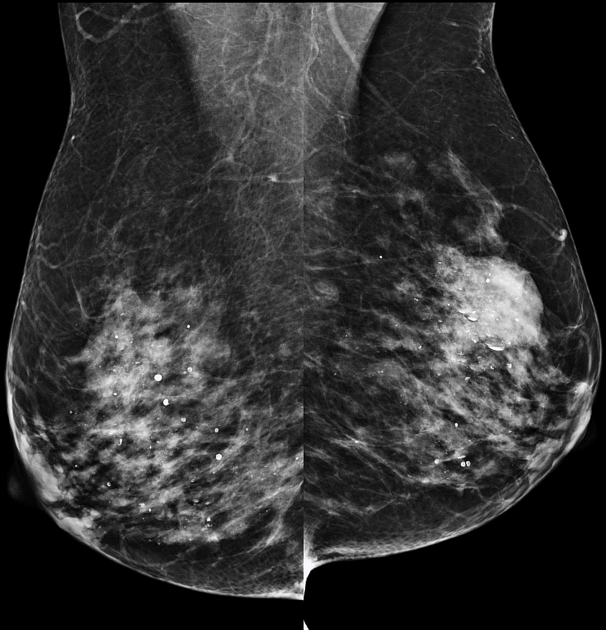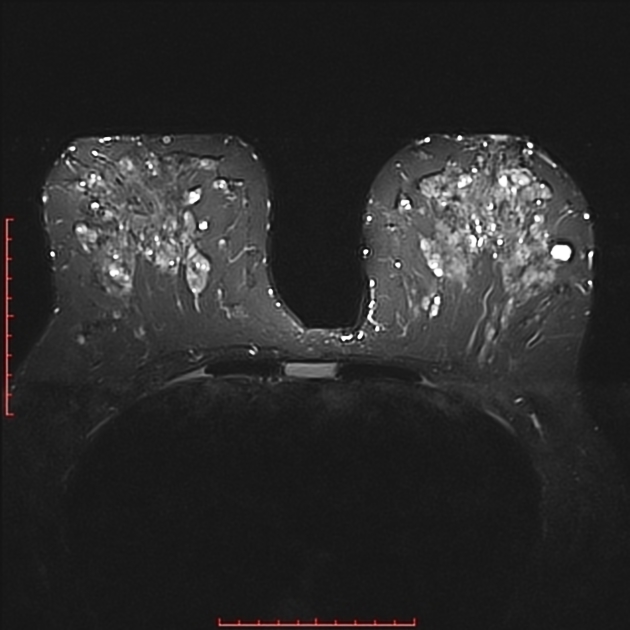Fibrocystic change of the breast (also known as diffuse cystic mastopathy) is a benign alteration in the terminal ductal lobular unit of the breast with or without associated fibrosis. It is seen as a wide spectrum of altered morphology in the female breast from innocuous to those associated with an increased risk of developing carcinoma.
On this page:
Epidemiology
Fibrocystic changes are a prevalent condition, observed clinically in up to 50% of women and histologically in 90% of cases 6. These changes are uncommon before adolescence and are most frequently diagnosed between the ages of 20 and 40, with incidence peaking around menopause.
In comparison to the general population, women with nonproliferative lesions do not exhibit a significant increase in the risk of developing breast carcinoma. However, those with proliferative disease have an elevated risk.
Clinical presentation
breast pain that worsens during ovulation
tender nodular swellings
most often multifocal and bilateral
Pathology
Hormonal alterations with estrogen dominance over progesterone are considered to be an important factor. The alterations seen are subdivided into:
non-proliferative (simple) fibrocystic change that includes simple breast cyst and/or fibrosis (most common)
-
proliferative that includes
atypical epithelial cell hyperplasias of the ducts or ductules
Aberrations in Normal Development and Involution (ANDI) of the breast encompass all changes associated with normal variations in breast parenchyma due to hormonal fluctuations and aging. Therefore, fibrocystic changes are more appropriately classified under ANDI rather than being regarded as a pathological condition.
Radiographic features
Mammography
breasts show heterogeneous and usually dense parenchyma
partially circumscribed masses may be present reflecting cysts
tea-cup, low-density round calcifications in multiple lobes
Ultrasound
On ultrasound, findings may show:
prominent fibroglandular tissue in the area of a palpable nodule; however, no discernible mass
small cysts in the mammary zone







 Unable to process the form. Check for errors and try again.
Unable to process the form. Check for errors and try again.